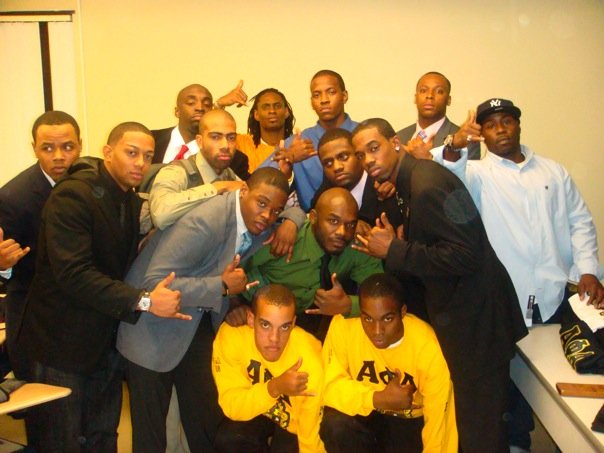Welcome to the website of the Rambunctious Rho Kappa (PK) Chapter of Alpha Phi Alpha Fraternity, Incorporated! We invite you to explore our website to find more information about the first continuous black intercollegiate fraternity founded on Tuesday, December 4th, 1906 at Cornell University, Ithaca NY. as well as information about our Chapter. The Brothers of The Rambunctious Rho Kappa (PK) Chapter hope that you can find any information that you need here on our website and if you need a list of the Current Brothers in the Chapter or need to contact us personally, feel free to do so by clicking on the "Contact" tab above.

Fraternity Mission Statement
Alpha Phi Alpha Fraternity, Inc. develops leaders, promotes brotherhood and academic excellence, while providing service and advocacy for our communities.
Fraternity Vision Statement
The objectives of this Fraternity shall be: to stimulate the ambition of its members; to prepare them for the greatest usefulness in the causes of humanity, freedom, and dignity of the individual; to encourage the highest and noblest form of manhood; and to aid down-trodden humanity in its efforts to achieve higher social, economic and intellectual status.
The first two objectives- (1) to stimulate the ambition of its members and (2) to prepare them for the greatest usefulness in the cause of humanity, freedom, and dignity of the individual-serve as the basis for the establishment of Alpha University.
RB-Site Creator
The opening of the school year, 1905-1906, found at Cornell University, Ithaca, New York, a group of black students distributed in the various colleges of the University, who were desirous of maintaining more intimate contacts with one another than their classroom study permitted. They often met in groups during the Autumn of 1905 and talked of the possibilities of closer contacts among themselves. Different ones among them took the lead in calling these meetings, which were informal in every detail.
As black students in a large American University, they were cut off from the many opportunities for mutual helpfulness which come to groups of students through personal acquaintance and close association. As individuals there were personal contacts of value with other members of the student body, but as a group they were proscribed in their associations. The cleavage, characteristic of this period, had laid the basis for the division even in college life. Many of these students were self-supporting and their resources were limited, and if membership in the university fraternal associations had been permissible, it is probable that advantage couldn't have been taken of the opportunity. Confronted by the social proscriptions of color, common to American institutions of this era, hampered by limited means with the attendant circumstances of the average poor student, these students faced the future and boldly endeavored to find a way out of their difficulties, scarcely realizing, however, the import of their action on subsequent generations of college students. Eight of these interested male students were registered in the undergraduate school of the university: Messrs. Henry Arthur Callis, Vertner Woodson Tandy, George Biddle Kelley, Charles Henry Chapman, Nathaniel Allison Murray, Robert Harold Ogle, Morgan T. Phillips, and George Tompkins. Another, C.C. Poindexter, of more maturity than the others, was registered in the College of Agriculture.
Two motives were operating in the minds of these students this period and it is interesting to note that these motives, although at first thought to be antagonistic, have been present and active in many individual chapters of the fraternity at subsequent periods. These motives have struggled one against the other throughout our history as a fraternal group. First the one then the other gained the ascendancy, and it is this experience which has brought about the present situation in which the existence of both motives are completely realized within the same organization.